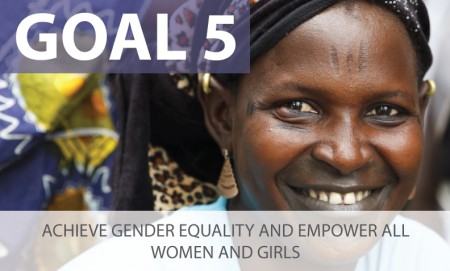Women represent half of the world’s population. Yet on a global scale, women and girls continue to fight an uphill battle against gender inequality. Among other challenges, women face discrimination, inadequate access to reproductive health, and violence in both the public and private spheres.
The obstacles to women’s empowerment range from sadly predictable to surprising. Many people are familiar with the gender wage gap where women earn 10-30% less than men for the same work. Less know that women and girls are 16% less likely to have access to information communication technologies, such as mobile phones and computers.
The United Nations has done a comprehensive review of the obstacles that women and girls face and proposed key targets to help break down the barriers to gender equality around the world. To make progress against these targets, it is important to recognize that women’s empowerment is not just a social issue, but also an economic one.
The potential global impact of this goal begs the question: How much stronger would the global economy be if 50% of the world had better access to financial services, higher salaries to invest, healthier options, and more access to higher education?

Companies can make a difference
Potential human rights risks and economic opportunities are both key reasons why businesses should pay close attention to barriers to gender equality. Many of these gender issues are interconnected and cannot be addressed in isolation. Instead, a wider lens, multi-stakeholder approach is necessary. While companies cannot be sole drivers of change, it is important that they take a proactive approach and look at gender issues from three different viewpoints:
Internal view – What steps can we take internally to empower and advance women in the workplace?
- 31% of women voluntarily exit the workforce for extended time periods and many find it difficult to re-join. Morgan Stanley’s Return to Work program offers a multi-week paid internship to experienced professionals who have taken a career break and would like re-enter the workforce. In February 2014, 15 women, were selected from a pool of over 500 applicants for the program. Some participants may receive a full-time job offer upon completion.
Products & services view- How can we apply our expertise to expand access for women and girls?
- There are nearly a quarter less women online than men in developing countries. Intel integrates its products and services into the Intel She Will Connect program, which uses a combination of digital literacy training, an online peer network, and gender-relevant content to help bridge the internet gender gap.
Value chain view – How can we expand opportunities and mitigate risks related to gender inequality in the areas where we operate?
- Nestlé aims to improve the livelihoods of women in its cocoa supply chain in Cote d’Ivoire. The company offers trainings on gender issues to cocoa cooperatives in order to shift expectations around women’s roles on cocoa farms and expand job opportunities for women.
SDG #5 is a lofty goal with many unique complexities. In particular, it will be difficult to navigate differing culture norms around gender as we seek to advance this goal across borders. We will look to multi-national businesses to join the discussion, share learnings, and collaborate on how to create globally relevant, but locally appropriate solutions. It will be a long drive, but businesses can help accelerate the momentum.
Linnea Texin, Senior Consultant, Corporate Citizenship
You can view Corporate Citizenship’s full SDGs 2015 blog series here.

